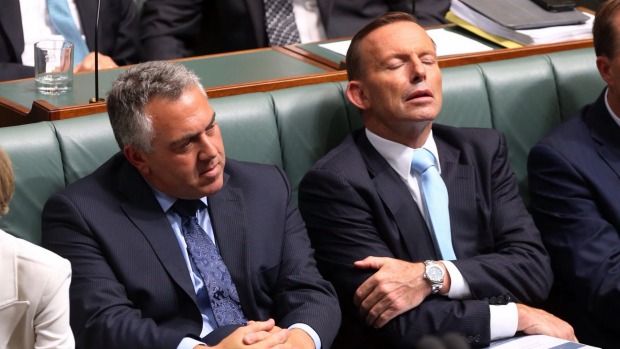If The Government Funds An Information Campaign Shouldn’t It Fund Disinformation Too?

A few days ago, I was enlightened, thanks to an interaction on Twitter.
It all started when I responded to a tweet from Adem Somyurek complaining that IBAC were an unelected body. I replied by pointing out that the police were also an unelected body and asking if he had a problem with them enforcing the law before adding that Dan Andrews was elected so that must make him ok.
I got a reply from someone pointing out that if I thing (sic) Dan Andrews was elected my mind control course was complete. This was pleasing because I often have trouble completing things and to have completed a whole course in mind control without even enrolling was a new experience for me.
Now I do know better than to argue on social media. There’s no point in engaging with conspiracy theorists because there is NOTHING that will ever change their mind. If they’re a member of a cult worshipping a particular individual and you got that individual to announce that everything they’ve ever said was a lie, then the conspiracy devotee would tell you that the person has been brainwashed… or the dark powers have replaced him with a robot.
But I stupidly made a comment. “Ah, another one of those ‘I don’t like reality therefore something else must be true and everyone is subject to mind control apart from me and a few of my friends‘ !”
To which he replied that he was happy to be one of those and then proceeded to send me a little “History Lesson” on a slide he’d created which was full of interesting facts which I’ll summarise because it really was quite dense:
- Labor removed YOU from your Constitution in 1973 without your consent by a Referendum. The Liberal Party were complicit.
- Whitlam wasn’t really sacked, and that he and Kerr and Fraser were all in cahoots to remove manufacturing in Australia and send “your jobs overseas”.
- In 1988 Labor removed your English Common Law rights without your consent by Referendum to “Common Law of Australia”.
- Labor signed up to Agenda 21 in 1992 which basically aims to destroy everything important including the family and fossil fuels.
Anyway, I did think of pointing out that it was pretty hard to take away everyone’s rights with a Referendum that nobody got to vote in. I did think of suggesting that maybe the person meant legislation but even then wouldn’t more people have raised it as an issue at the time? And I did think of asking what was the motivation behind all this.
However, I already know that there’s no point in trying to change people’s minds with facts. It’s a nice idea but it just doesn’t work. Particularly when the person you’re dealing with has such a loose grasp of them anyway.
Take Fifi Murray who frequently pops up on my Twitter feed complaining about various things like being woke and the fact that people like Adam Bandt exist and Communists running the country. Her profile says that she follows The Outsiders, Rowan Dean, Mark Latham, Paul Murray, Peta Credlin, Chris Kenny, etc. This is quite an achievement because I’ve never been able to follow them…, particularly Rowan Dean who never says anything I can follow in any way.
Anyway, Fifi tweeted the following:
“So, the energy legislation passed the house 85- 41. I’d like to know how many Liberals crossed the floor in support of it.
“What’s the bet that Simon Birmingham was one of them?”
In spite of my understanding that facts don’t matter I still felt compelled to point out two things:
- Birmingham is a senator and wouldn’t have been voting in the house.
- Simon is overseas as part of a bipartisan tour and has been popping up on the news with Penny Wong and others.
Fifi didn’t acknowledge my tweet for some reason.
Ok, I know that arguing on social media is like Sisyphus pushing the rock up the hill only to have it roll back down again but sometimes one can’t help oneself. I mean I know that I won’t be able to change Matt Canavan’s thinking, even in the unlikely event that I find that he ever does any, but when he starts complaining that this energy legislation is socialist and he wants to protect the free market and jobs so that we’re all better off, I feel an urge to ask about how ballooning energy prices are helping manufacturers who may go out of business. I mean, even the most ardent capitalist who thinks that poor people deserve to freeze because they have no money must surely see that high gas and electricity prices are bad if they’re hurting business!
The whole energy thing is a great example of confirmation bias and I suspect that it’s going to hurt the Coalition more than any other party because they’re aligning themselves so strongly with the energy companies. It was one thing to attack the so-called Carbon Tax but it’s quite another thing to attack the price cap. In the first case, the LNP position was that this is making everything more expensive, while in the second it’s that putting a cap on things is socialism and we should let the free market sort it out. It’s a lot easier to argue against higher prices than to argue for them.
At the moment the Coalition position seems to be that this temporary price cap won’t work long term… which I would have thought is why it’s only a temporary cap but, hey, I’m not the expert here. And their second point is to agree with the energy lobby that the bit in the legislation about making a “reasonable profit” will discourage investment in the long term and lead to higher prices because of shortages. As Ian Macfarlane said the other said, if gas companies are restricted in their profits here they’ll just sell it overseas. I mean, it’s not like we own the gas or anything.
Ok, leaving aside the whole idea of energy companies demanding the right to make an UNreasonable profit. the idea of a shortage leading to higher prices creates a rather interesting prospect: Energy companies are upset because this will lead to them getting higher prices for the gas they extract. And if that’s the case won’t that mean that it’s worth extracting the gas for the inflated price even though their profit will only be reasonable?
Still, what would I know? I didn’t even notice the Referendum that took away my rights.
Like what we do at The AIMN?
You’ll like it even more knowing that your donation will help us to keep up the good fight.
Chuck in a few bucks and see just how far it goes!
Your contribution to help with the running costs of this site will be gratefully accepted.
You can donate through PayPal or credit card via the button below, or donate via bank transfer: BSB: 062500; A/c no: 10495969










